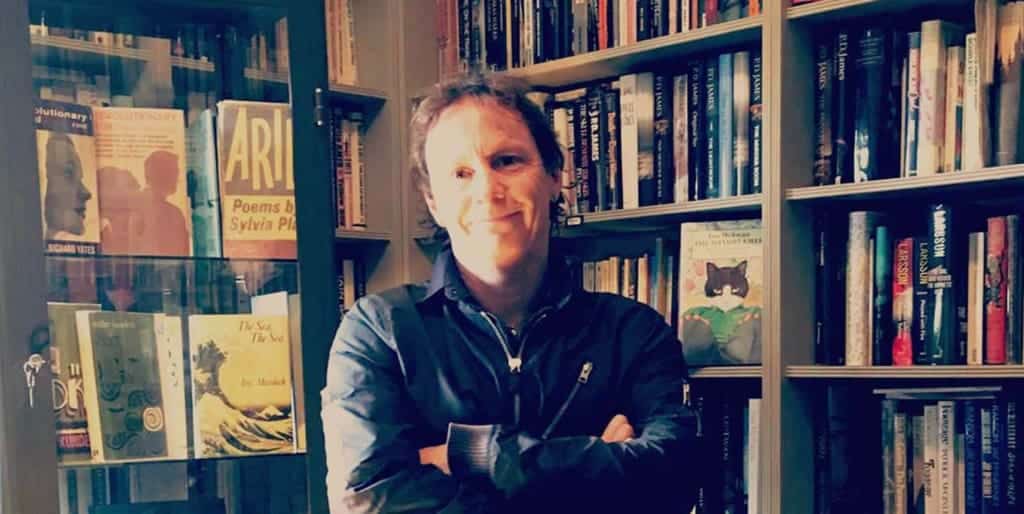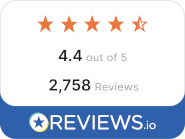Phill Savidge: The Book Collector

To many people, Phill Savidge is best known for being one of the main instigators of the Britpop movement. Cutting his teeth at Mel Bell and Virgin Records, Savage and Best, the PR company he set up in 1990 with John Best became one of the main drivers of the emergent indie scene. Over an eight-year period they represented many of the movement’s protagonists, including Suede, Pulp, The Auteurs, Black Box Recorder, Echobelly, Menswear, Elastica, Dubstar, Space, Kula Shaker, 60 Ft. Dolls, Ultrasound, Longpigs, Marion and The Verve.
Music might make up the day job, but back at home Savidge is a self-confessed bibliophile. A book collector since his university days, his collection began with an interest in the work of Ian McEwan, Martin Amis and Julian Barnes. Since then, his collection has grown to feature a wide variety of works. As well as novels by renowned authors like Ishiguro, Phillip Roth and Colin Wilson, he’s amassed a diverse library that includes books about the moon before the moon landings, ‘Sherlockiana’ and some unusual first editions with titles like Nazi Wives and What Witches Do. He even has a decent selection of books about book collecting.
Though his collection is mind-bogglingly huge, Savidge has only recently started to consider himself a collector. “I only realised I was a book collector about eleven years ago,” he told us, “when I had to move house to accommodate my collection.”
What attracted you to buying books?
I think I first became interested in book collecting when I looked around my room as a child and realised I owned 25 Doctor Who books. Then, when I went to university, I started buying anything published by Picador as they struck me as an arbiter of good taste. Of course, these were all paperbacks – and I hardly had an idea what a first edition was in those days – but they were all white-spine paperbacks and they looked really great on my shelves.
The authors I discovered here – Julian Barnes, Colin Wilson, Ian McEwan, Bret Easton Ellis and Graham Swift amongst others – form the benchmark of my current collection but it was another publisher, Granta, and their 1984 list of Young British Novelists that really convinced me that I wanted to collect. Here I discovered Martin Amis and Kazuo Ishiguro and was reacquainted with Barnes and McEwan and, if I look around my book collection today, I find that I have a first edition of almost every book they’ve ever written.
How has your collection developed?
Aside from the authors detailed above I have huge, pretty much complete, first edition collections by Milan Kundera, Iris Murdoch – I measure my Murdoch collection in feet rather than editions – Philip Roth, Richard Yates, Andre Dubus, John Banville, Nick Hornby and Peter Ackroyd (amongst others). I also collect Sylvia Plath and have a section labelled “Plath & Related” – my books are arranged in alphabetical order in the year they were written – so that if my house and library ever gets raided by ardent feminists they will see Ted Hughes in amongst it and think I’m on their side. (This is a sort of in-joke.)
I’ve been vaguely obsessed by Sylvia Plath since reading The Moon & The Yew Tree at school and when I stumbled upon a handwritten poem she’d written in pencil as a teenager together with a lock of her hair – a snip for £75,000 – at an antiquarian book fair, I wondered what I would actually do if I had that kind of money. The obsession went even further when I discovered that her father, Otto Plath – such a huge inspiration for her life and work – had published a book called Bumblebees and Their Ways and I started visiting rare bookstores around the country just to browse through their book section on bees. I eventually found a copy at an antiquarian book fair in London; it was a large, beautiful book with, surprisingly, a bee on a budding flower on the dust-jacket and I held it for several minutes before glancing at the price and walking away. An hour later, when I went back to talk about money, the book had disappeared.
Are you attracted to one particular author or genre?
Generally, I collect McEwan, Barnes, Ishiguro, Richard Yates, Milan Kundera, Philip Roth, Iris Murdoch. I’ve also been collecting Colin Wilson books for many years – he wrote around 118 books – but I can’t keep my reading of them up with my buying of them. Wilson’s The Outsider, first published in 1956, which I first read as a Picador paperback, convinced me that he was a genius and, even though his career derailed somewhat after he became obsessed with murder and the occult, every book I’ve read by him has convinced me further than he can write about anything with such fine wit and insight that I know I will collect all 118 first editions and eventually read all of them.
Aside from 20th/21st century modern first editions, I collect books about the moon before the moon landings, obscure first editions of books written by a professor of philosophy at my university, Sherlockiana, interesting or unusual first editions with titles like Nazi Wives and What Witches Do and, yes, you’ve guessed it, books about book collecting.
What makes a book valuable?
It’s really about the number of people wanting to own it. Five years ago, you could have probably picked up a first edition (if you could find one) of John Williams’ seminal campus novel Stoner (originally published in 1965) for a few pounds but fast-forward to 2013 and Julian Barnes (and several others) championing a reissue and you would be lucky to find one for a thousand.
As to value itself, then it’s often the original dust jacket that is the most valuable thing about a book: a first edition will usually be around ten times as expensive with the cover than without it.
What makes a book beautiful? Do you collect books as objects or to read?
Books can be beautiful in themselves and I own several books that strike me as beautiful but have no intention of reading: a signed William Burroughs outsize hardback called Seven Deadly Sins for which Burroughs pistol-shot the wooden artwork; a children’s book called The Good, The Bad and The Two Cookie Kid signed by Johnny Cash (he narrates the audio version) and some of the McSweeney editions that I never seem to get around to opening as I don’t want to spoil their contents.
Can you judge a book by its cover? What makes for amazing cover art?
No, you can never judge a book by its cover. I own many books with drab exterior jackets but extraordinary works within.
I think Iris Murdoch’s 1978 novel The Sea the Sea which features Hokusai’s The Great Wave off Kanagawa on its dust-jacket is my favourite cover art but often as a collector I am going back to books that were published before I was born and just to be able to see their original cover art is reward in itself.
Do you have several editions of the same book?
I have multiple copies of many, many books – in fact my wife ribs me that I have made my library into an actual bookshop – and I own so many duplicate copies of Ishiguro, McEwan and Milan Kundera novels that you might easily suspect I am trying to keep them away from those that won’t fully appreciate them.
Indeed, my pursuit of the perfect copy of Kundera’s debut novel, The Joke, has become something of, ahem, a joke: I own several UK and US 1969 first editions of the book, multiple copies of a 1982 translation by Michael Henry Heim that Kundera originally approved of and then discarded and travelled to Prague to track down the true 1967 Czech first edition, Zert – even though I can’t speak Czech. I own several signed Kundera first editions – and they’re not easy to find – but my ultimate goal is to find the original English translation from 1969 signed by Kundera, knowing that he hated that translation.
Is there any book in your collection that you are most sentimental about? What’s the story behind it?
I think the book I am most sentimental about is Richard Yates’s Revolutionary Road, since I looked for a first edition for such a long time.
One day I found myself in Contact Editions in Toronto and asked the owner if he had ever seen a copy. He said he had one at home and would bring it in the next day. The following morning, I was holding it in my hands, gawping at the price and saying, “thanks very much, I’ll be in touch” knowing that I would never be able to afford it. Then, when I got back to the UK, I couldn’t stop thinking about it so I asked my wife to ring the book store as I didn’t want to hear the price quoted to me down a telephone line. In hindsight, it’s not a particularly expensive book but it means a lot to me.
More about Phill Savidge
Phill helped launch Silk Sound Books, the greatest books read by the greatest actors.

Get a home insurance quote online
Get a quote online in less than 10 minutes*



